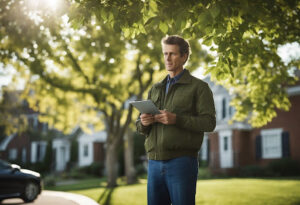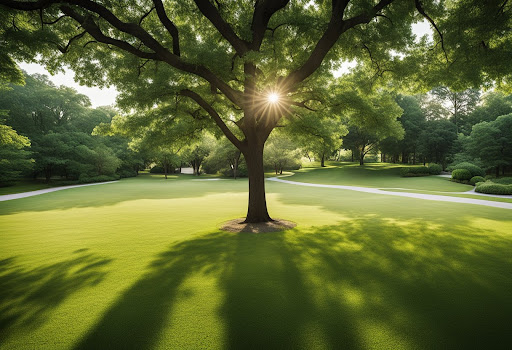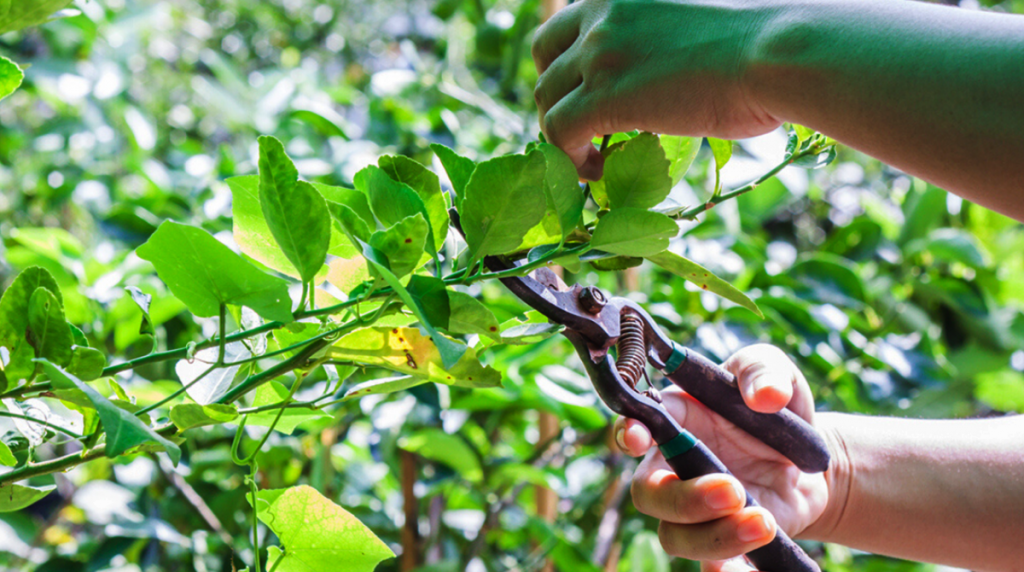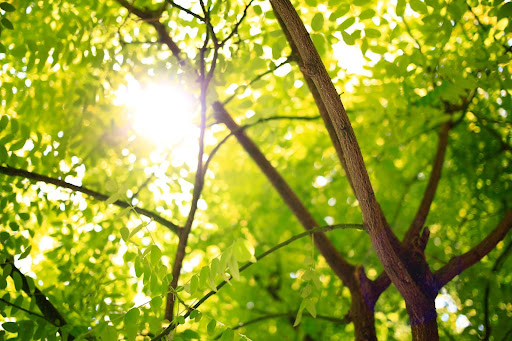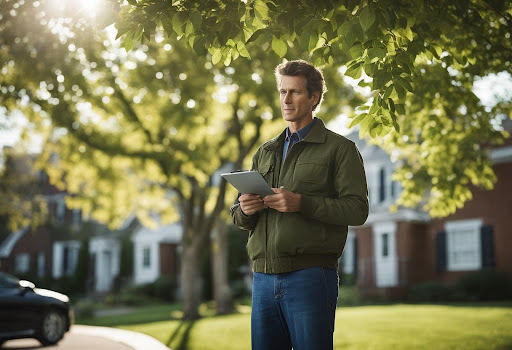
Tree Risk Management in Argyle, TX: Essential Practices for Homeowners
Date November 08, 2024
Tree risk management is essential for homeowners in Argyle, TX, who want to protect their property and enhance their landscape’s safety. Regular inspections and maintenance provided by TreeNewal can prevent unexpected tree failures that pose risks to homes, vehicles, and lives. Understanding the local environment and tree species can help homeowners identify potential hazards early.
In Argyle’s unique climate, specific tree species are more prone to certain risks, making timely assessments even more critical. By implementing effective management practices, such as monitoring for disease, checking root stability, and pruning dead branches, homeowners can significantly reduce the likelihood of accidents. Engaging with professionals for regular evaluations is a proactive approach to ensuring a safe and healthy outdoor space.
Investing time in tree risk management can lead to a more enjoyable and secure living environment. By being aware of the signs of tree stress and addressing them promptly, homeowners can maintain the beauty and safety of their property while contributing to a healthier community.
The Importance of Tree Risk Management in Argyle, TX
Tree risk management is essential for homeowners in Argyle, TX. Regular inspections can identify potential hazards posed by trees, such as dead branches or weakened roots.
Key Benefits of Tree Risk Management:
- Safety: Reduces the risk of falling branches or trees, protecting property and people.
- Health: Identifies diseases and pests early, promoting the overall health of trees.
- Aesthetics: Maintains the beauty of landscapes, enhancing property value.
In Argyle, local weather conditions can affect tree stability. Heavy rains or storms can lead to unexpected failures. This makes proactive management crucial.
Homeowners should conduct assessments at least once a year. Engaging professional arborists for detailed evaluations can provide deeper insights.
Signs That Indicate a Need for Inspection:
- Leaning trees or branches
- Cracks in the trunk or branches
- Mushrooms growing at the base
By prioritizing tree risk management, homeowners can ensure their outdoor spaces remain safe and appealing. Regular maintenance not only protects property but also fosters a healthier environment.
Regular Tree Inspections
Regular tree inspections are crucial for maintaining the health and safety of trees in Argyle, TX. They help homeowners identify potential hazards, assess tree health, and determine whether professional intervention is necessary.
Identifying Potential Hazards
During inspections, homeowners should look for several potential hazards. Key indicators include:
- Dead or Dying Branches: These can fall unexpectedly and pose risks.
- Cracks or Splits: Visible damage indicates structural weaknesses.
- Lean: Trees that lean significantly may be unstable, especially in storms.
- Root Issues: Exposed or decayed roots can compromise stability.
Homeowners should conduct visual checks frequently, especially after severe weather. Identifying these hazards early allows for timely action, reducing risks to property and safety.
Assessing Tree Health and Stability
Tree health assessments focus on several factors that dictate a tree’s vitality. Key areas to evaluate include:
- Foliage Condition: Healthy leaves are vibrant and full, while bare or discolored leaves may signal distress.
- Bark Integrity: Check for peeling bark or wounds, which can indicate disease or pest problems.
- Growth Patterns: Uneven growth may indicate issues below the surface, like root problems.
Regular evaluations help homeowners understand the overall stability of their trees. Healthy trees are resilient against diseases and environmental stressors.
Professional Arborist Evaluations
In many cases, consulting a professional arborist is essential for a thorough evaluation. Arborists are trained to spot issues that may go unnoticed by untrained eyes. They offer detailed reports on:
- Tree Species Characteristics: Different species have unique vulnerabilities.
- Risk Assessment: Evaluations include determining the likelihood of failure and potential consequences.
- Treatment Recommendations: Arborists can suggest appropriate interventions, whether pruning, cabling, or removal.
Homeowners are encouraged to schedule evaluations at least once a year or following severe weather events. This proactive approach can protect properties and enhance the longevity of trees in the landscape.
Proactive Tree Maintenance
Regular proactive maintenance is essential for maintaining the health and safety of trees in Argyle, TX. Practices such as pruning, soil care, and pest management contribute significantly to tree longevity and stability.
Pruning and Trimming
Pruning and trimming are vital for promoting healthy growth and ensuring safety. Proper pruning helps to:
- Remove dead or damaged branches
- Enhance air circulation and light penetration
- Shape trees for aesthetic purposes
Timing is crucial; late winter or early spring is often the ideal time to prune most species. Homeowners should also consider hiring certified arborists for larger or more complex trees. They can assess specific needs based on species and growth patterns. Regular trimming prevents overgrowth, minimizes hazards, and promotes a more robust tree structure.
Soil Care and Root Management
Healthy soil is foundational for tree vitality. Homeowners should assess soil quality and focus on the following practices:
- Aeration: Helps roots breathe and absorb nutrients more effectively.
- Mulching: Retains moisture, suppresses weeds, and adds organic matter to the soil.
- Fertilization: Ensures trees receive necessary nutrients, which may become depleted over time.
Monitoring soil moisture is also essential, as both drought and flooding can negatively impact root health. Conducting soil tests can provide insights into nutrient levels and pH balance, allowing for targeted amendments.
Disease and Pest Prevention
Preventing diseases and pests is critical for tree health. To mitigate risks, homeowners should adopt the following practices:
- Regular Inspections: Look for signs of disease such as discolored leaves or unusual growths.
- Integrated Pest Management (IPM): Combining cultural, biological, and chemical controls can be effective.
- Proper Watering Practices: Over or under-watering can stress trees, making them more susceptible to disease.
Utilizing resistant tree species can also decrease the risk of infestations. Keeping surrounding areas clean of debris reduces potential harboring for pests. Regular monitoring and swift action at the first sign of trouble are essential for maintaining tree health.
Emergency Response and Remediation
Timely and effective emergency response is crucial for managing tree risks, especially after severe weather events. Homeowners should be prepared to address storm damage promptly and ensure safe cleanup of affected areas.
Dealing with Storm Damage
After a storm, assessing tree damage is essential. Homeowners should inspect their property for leaning trees, broken branches, or any signs of instability. It’s important to evaluate the health of trees that appear unaffected, as internal damage may not be immediately visible.
In cases of severe damage, contacting a certified arborist or tree care professional is advisable. They can provide expertise in assessing trees and safely executing emergency measures. Prioritizing safety is crucial; homeowners should avoid attempting any work on hazardous trees themselves.
Documenting damage with photographs can help with insurance claims and future assessments. Maintaining clear communication with professionals during this phase can streamline recovery efforts.
Tree Removal and Site Cleanup
If a tree poses a danger after storm damage, removal may be necessary. Certified professionals should handle this process due to the complexities involved, especially when dealing with large or unstable trees.
Cleanup involves removing debris, such as branches, leaves, and any fallen parts of the tree. Homeowners should clear the area of any hazards to prevent accidents. Utilizing a professional service can ensure that this is done effectively and safely.
Proper disposal of the removed tree and debris is also crucial. Local guidelines may dictate how to dispose of green waste, so it’s important to follow those regulations. Engaging with community programs for tree recycling may also be beneficial.
Protect your property with proactive Tree Risk Management in Argyle. Regular inspections and maintenance by certified arborists can prevent unexpected tree failures, ensuring a safer, healthier landscape. TreeNewal, serving the Dallas and Fort Worth Metroplex since 2017, offers expert assessments tailored to the unique needs of Argyle’s trees. Don’t wait for an emergency—schedule your Tree Risk Management service with TreeNewal today to safeguard your home and enhance your outdoor environment!
